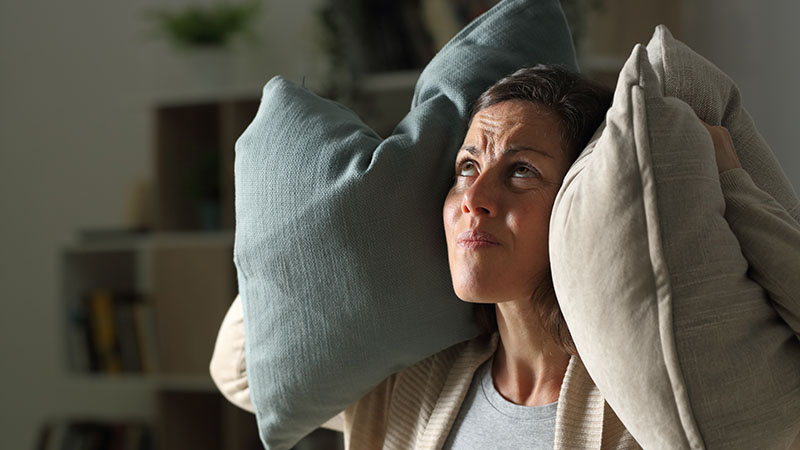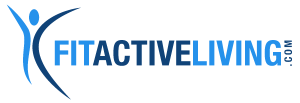Related: 12 Best Treadmills Under 1000 Dollars, 6 Best Treadmills Under 2000 Dollars, 7 Best Curved Treadmills for Sale
A treadmill is a smart choice for getting in shape at home.
But annoying your housemates and neighbors with constant noise isn’t such a good idea, especially if you’re an early morning exerciser.
In this article, I’ll lay out seven things you can do to reduce the noise coming from your treadmill, so you can maintain peace with those who share your environment.
Cause of Treadmill Noise

All treadmills, being machines with moving parts, will create some noise.
A noise level that is distracting or annoying to others, though, may reveal a problem with the machine.
Here are three noise-related issues you can easily fix.
Treadmill Belt Incorrectly Adjusted
If the treadmill belt is not properly aligned, it will cause a constant bumping sound.
You should tighten or adjust the belt according to the user manual.
Clogged Motor
The static electricity generated from the motor is a grime magnet.
A treadmill motor that is infested with dust, dirt, and debris may cause a whirring or churning noise. Be sure to open the treadmill cover and clear the motor of debris.
Motor or Monitor Malfunction
The monitor or the motor of your treadmill may emit a strange noise that persists despite your best efforts. In that case, seek service under the treadmill’s warranty.
Before applying the following fixes, check if it is actually your treadmill that is making the noise. If it’s on hardwood, then you may need to fix the squeaky hardwood floors.
Seven Ways to Reduce Treadmill Noise
1. Position your Treadmill for Noise Reduction
The location of your treadmill affects the noise that comes from it. While your new machine may fit nicely into a corner, that’s not a suitable position for sound.
The reverberation from the two walls will magnify the noise like a megaphone.
If possible, place the treadmill at an equal distance from walls to minimize the amplification effect.
Make sure, too, that you place the treadmill on a completely flat surface. If there is even a slight lean, the treadmill will wobble and noise will result.
Look for a treadmill with adjustable stabilizers in each corner. These will allow you to level the treadmill even if the floor is off-kilter.
The surface that you put your treadmill on also impacts its noise level.
Do not put it directly on a hardwood floor, as the reverberation will travel directly through the floorboards. If you’ve got people living below you, they’ll soon be driven to distraction.
You should place your treadmill on a carpeted floor. The carpet will help to muffle the noise that comes out of the bottom of the machine.
2. Use a Treadmill Noise Reduction Mat
- Made from abrasion and wear resistant 100% recycled rubber
- Designed to protect your floor from your treadmill and workout equipment
- Reduces noise and vibration, provides anti-slip, abrasion, impact protection, and shock absorption
- Provides superior underfoot comfort and support to absorb the shock of running, exercising, and walking
- Perfect for Bowflex , Sole, Horizon, Nautical and most other treadmills
Placing a 3/16-inch rubber mat under your treadmill will also help to reduce the noise level. The mat should be big enough to cover the entire area of the treadmill.
As well as reducing treadmill noise, a mat will also protect your floor covering.
It will also protect the underside of the treadmill from dust and debris.
A treadmill mat will also help to prevent the gradual forward creep that often happens when you place a treadmill directly onto carpet. As a result, the treadmill will be more stable.
3. Keep the Treadmill Belt Lubricated
- The original applicator tube for easy full width belt lubrication. Each controllable squeeze bottle of treadmill lubricant comes with 2 dispensing options, both caps specifically chosen to match the...
- Pure silicone treadmill belt lubricant formulated for a wide range of modern treadmills. Works great for home and heavy duty commercial treadmills, most elliptical equipment, and other exercise...
- Eliminate mess. Full belt width lubrication with no need to lossen the belt. The patented cap with tubing easily slides between the belt and deck to deliver lubricant to the center of the belt, right...
- Protects your equipment from costly repairs by reducing friction between the belt and deck. Experts advise that regular lubrication reduces noise, extends both belt and motor life, eliminates belt...
- Keeps you and your treadmill in tip-top shape! Ideal for all treadmills requiring non-petroleum silicone based lubricant including Nautilus, Epic, Landice, LifeSpan, NordicTrack, Sole, ProForm, Life...
A dry treadmill belt will cause increased friction with the rollers.
This can result in a squeaking noise that can be very annoying. You can avoid it by keeping the belt and deck well lubricated.
Most treadmills only need to be lubricated once every three to six months. You should refer to the user manual for guidance on what type of lubricant to use and how to go about it.
As well as lubricating the treadmill belt, you should also apply a little lubricant to the motor belt and pulleys.
You will find these at the front of the treadmill. You should also lubricate any pivot points once every few months.
4. Perform Regular Maintenance
Besides lubricating your treadmill, do monthly inspections to make sure that all the nuts and bolts remain securely tightened. This can help to eliminate clunking or creaking treadmill noise.
If there is a squeaking sound coming from the motor that persists, get it serviced under warranty.
If the warranty has expired, it may be worth it to pay for a professional service. The service tech will give the entire treadmill a maintenance check and tune-up.
Once done, the treadmill should serve you for at least five years before it will require another professional service.
5. Wear Light Running Shoes
Using a good pair of running shoes suited for a treadmill is a good idea to help reduce treadmill noise that your feet make. The heavier the shoes you wear, the more noise you’ll generate.
As a result, opt for lightweight running shoes. As well as minimizing pounding noise, it will also help you feel lighter and more agile.
Some people choose to run with bare feet or while wearing socks. Barefoot running on treadmills is becoming increasingly popular.
Recent research supports the practice, with one study showing that barefoot running causes less impact on the ankle, knee, and hip joints than running in shoes.
6. Use the Incline Function

Putting the running belt on an incline simulates walking or running uphill. This makes the workout harder.
As a result, you will not be running as hard. That means that the impact noise of your foot will not be as great and help to reduce the treadmill noise.
Using the incline function will have the added benefit of increasing your calorie burn. It will also allow you to better target the hamstrings and calves.
This is just one of the benefits of using a treadmill.
Obviously, the speed of your running will affect the noise level. You can use treadmills for a variety of training programs, including HIIT workouts.
But when you change the speed regularly, this can affect the noise they make.
7. Soundproof Your Room
Soundproofing the room that you workout in is not as daunting as it sounds.
You could go to the extent of adding drywall or putting up insulation between the joists.
If you don’t want to mess with the structure of the room, you can simply hang blankets from the ceiling to act as sound barriers.
If you are in an upstairs apartment, you can install a floor underlay in the area on which the treadmill sits. This will require uplifting the carpet in that area.
Combined with a treadmill mat, it will reduce the treadmill noise traveling downstairs by as much as 75 percent.
Summary
You don’t have to put up with treadmill noise.
By locating your treadmill away from walls, placing the machine on carpet and a treadmill mat, wearing light running shoes, and undertaking regular maintenance, you can reduce the treadmill noise level by as much as 80 percent.
That will allow you to get your workout in while still maintaining harmony with those living around you.
Looking for a noise-reducing treadmill under 2000 thousand dollars? Check out our research into the best the market has to offer.


